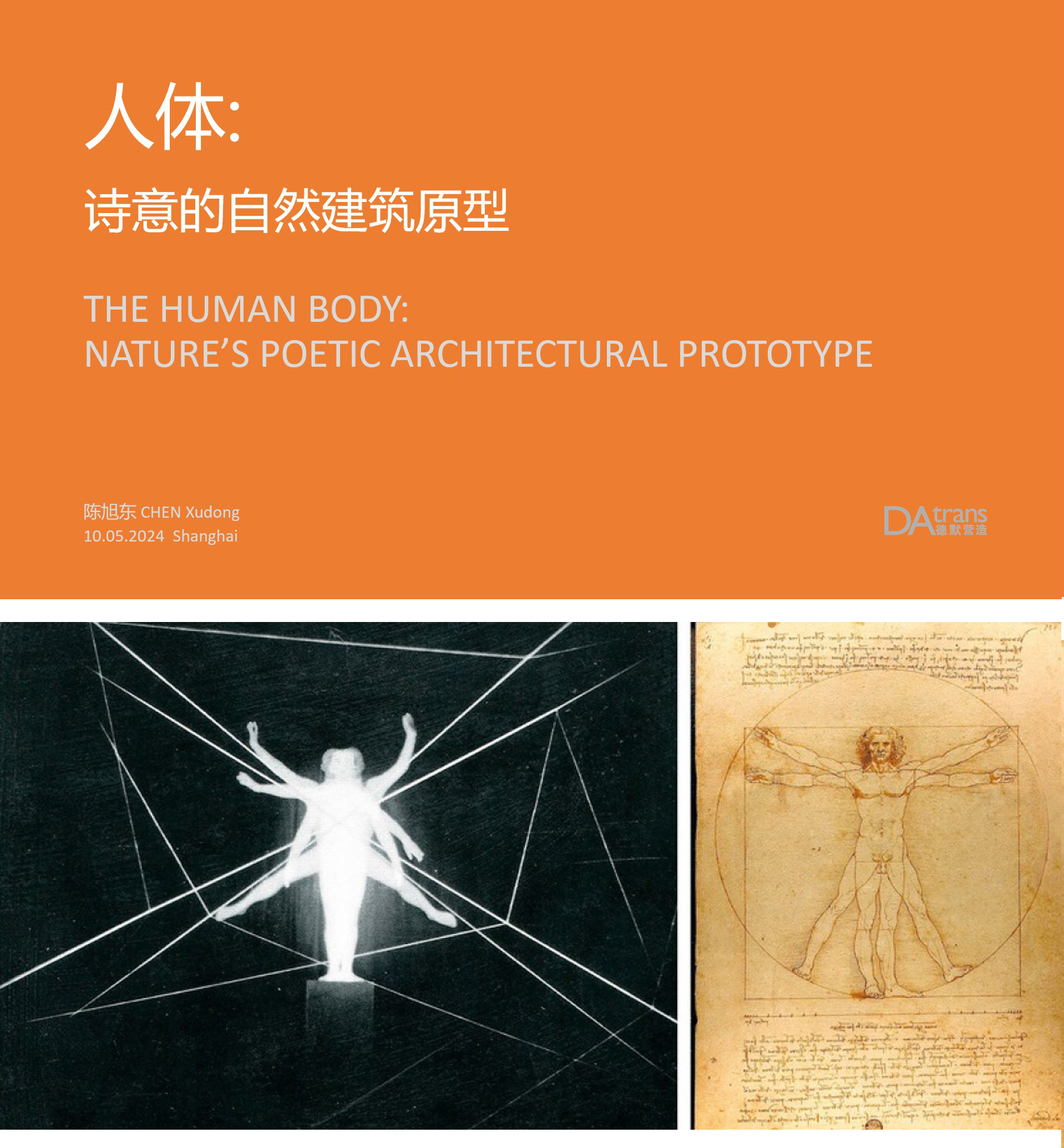![]()
4.12.2025 | 2025年12月4日 星期四
![]()
4.12.2025 | 2025年12月4日 星期四
2025-5
Lecture: The Human Body: Nature’s Poetic Architectural Prototype
讲座:人体:诗意的自然建筑原型
2025-4
D-Scope 2025: Symposium and Exhibition Opening
动·境2025(D-Scope):研讨会及展览开幕
2025-4
2024-6
Lecture: The new Exploration of Ideal Urban Waterfront Lifestyle
讲座:城市理想滨水生活空间的新探索
2023-6
2021-9
Opening of group exhibition “Object from Object Poem” in DA+ Space
物诗之物:DA+大家空间2021群展开幕

2025年5月10日,合伙人陈旭东受同济大学设计创意学院研究生课程项目的邀请,发表了题为《人体:诗意的自然建筑原型》的演讲。
持续2个小时的演讲旨在探讨人体与建筑之间的深刻联系:先从当代人居生活的危机入手,指出了空间异化、感知弱化及诗意缺失等问题,随后沿着古典时期、文艺复兴直至现代主义的历史线索,分析了人体如何作为建筑的原型与尺度,使得西方人体与宇宙的同构理论及建筑比例法则得以逐步形成。同时,重点论述了现代人体解剖学科与拟人化柱式经典神话的矛盾和冲突,以及现代建筑中密斯的“皮肤—骨骼”理论和柯布西耶的模数系统,对于延续人体与建筑有机对话的重要意义。最后,演讲呼吁回归“诗意的感知地景”,通过自然与人文的融合重构建筑的人性化维度。
On April 20, 2025, partner Xudong CHEN was invited by the Graduate Program of the College of Design and Innovation at Tongji University to deliver a lecture titled “The Human Body: Nature’s Poetic Architectural Prototype”.
The two-hour lecture explored the profound connection between the human body and architecture. Beginning with the crises of contemporary habitation—such as spatial alienation, weakened perception, and the absence of poetic imagination—it traced the historical evolution from classical antiquity and the Renaissance to modernism, analyzing how the human body has served as both a prototype and a scale for architectural design. This framework allowed Western theories of cosmic-body isomorphism and architectural proportionality to gradually take shape. The lecture also examined the tensions between modern anatomical studies and the classical mythology of anthropomorphic column orders. Additionally, it highlighted the significance of Mies’ "skin-and-skeleton" theory and Le Corbusier’s Modulor system in sustaining an organic dialogue between the body and architecture. In conclusion, the presentation called for a return to the “poetic perception of landscape”, advocating for a reintegration of nature and humanistic values to restore architecture’s empathetic dimension.